Frangible ammunition might be one of the most misunderstood products in the entirety of the gun world.
An insane number of gun owners are stuck in the mindset that frangibles today are the same poor-performers they were fifty years ago and a number of others fail to comprehend the myriad uses for it, believing it is only for use on steel.
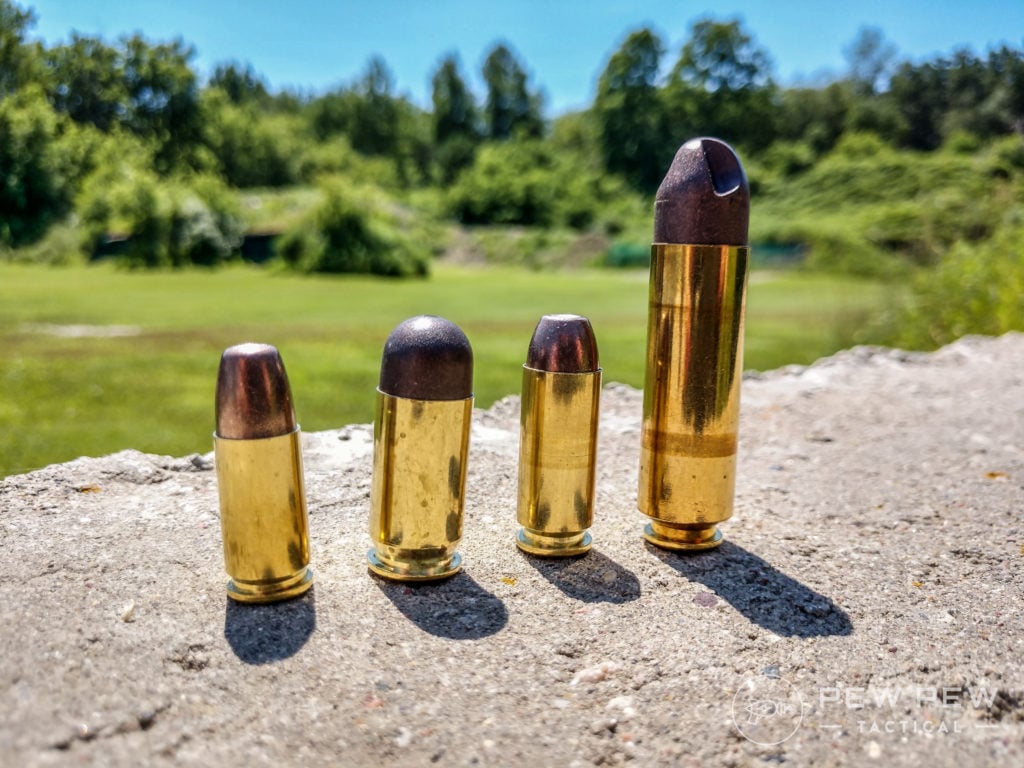
I’m here to tell you not only do frangibles have a crazy-wide range of uses but that they are awesome. And you should totally be using them. If you’re not, you’re missing out. Allow me to explain it to you.
Table of Contents
Loading…
But First…
Bullets have evolved enormously with one particular bullet taking the lead for innovation and versatility: frangibles.
They aren’t new at all, in fact, they first hit the gun scene in mid-20th-century shooting galleries. If you check out the 1967 edition of the Shooter’s Bible you’ll see Remington Spatter-Less and Winchester SpatterProof rounds labeled as gallery cartridges (read: frangibles).
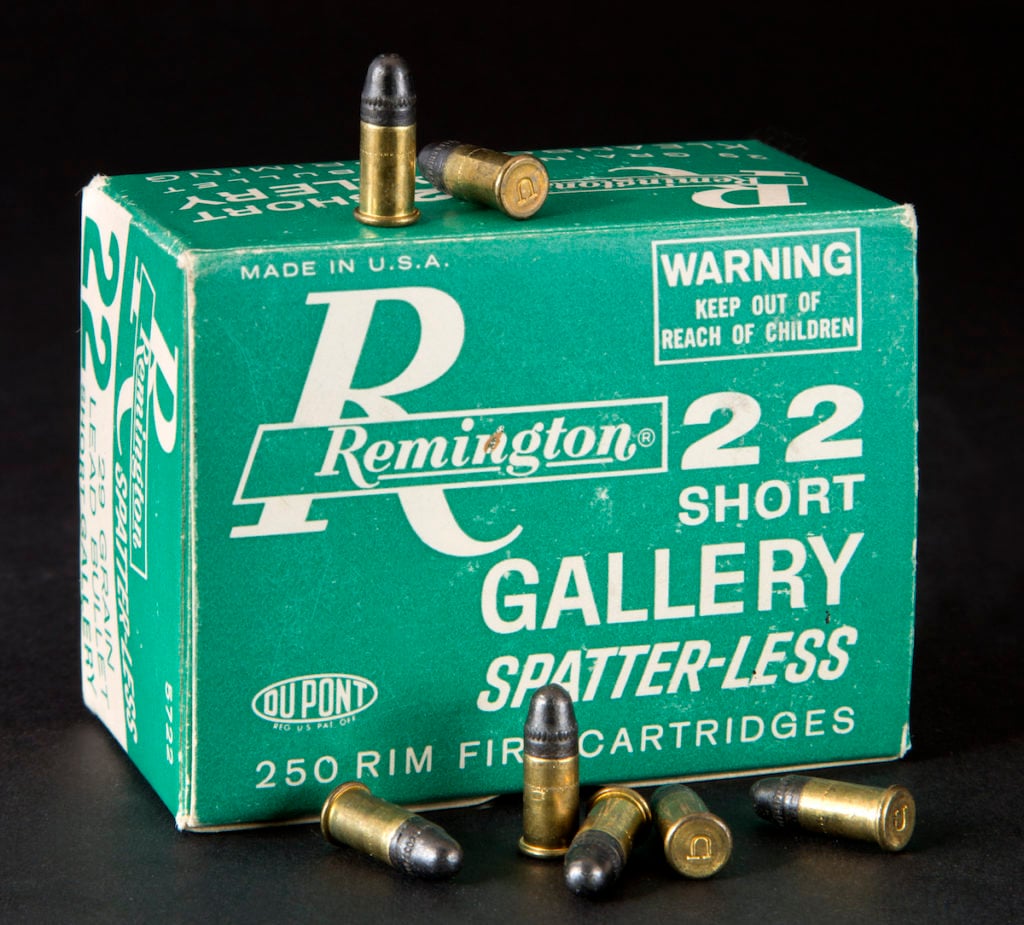
You know how the science behind hollow points has advanced? So has the process of manufacturing frangibles.
Frangible bullets have a pretty basic use: reduce or eliminate ricochets and backsplash.
Six decades ago it may have been about injury-free fun at shooting galleries – and why the heck don’t we have those anymore? – but today it’s about CQB (Close Quarter Battle) training, self-defense, and hunting.

Sixty years ago gallery rounds were made with iron powder, creating projectiles that penetrated far more deeply than anticipated. They were magnetic, too. There’s no comparison at all between those old gallery rounds and the frangibles of today.
Modern-day frangible bullets are manufactured using powder metallurgy, a process involving the pressing and sintering of finely powdered metals into objects (in this case, bullets).
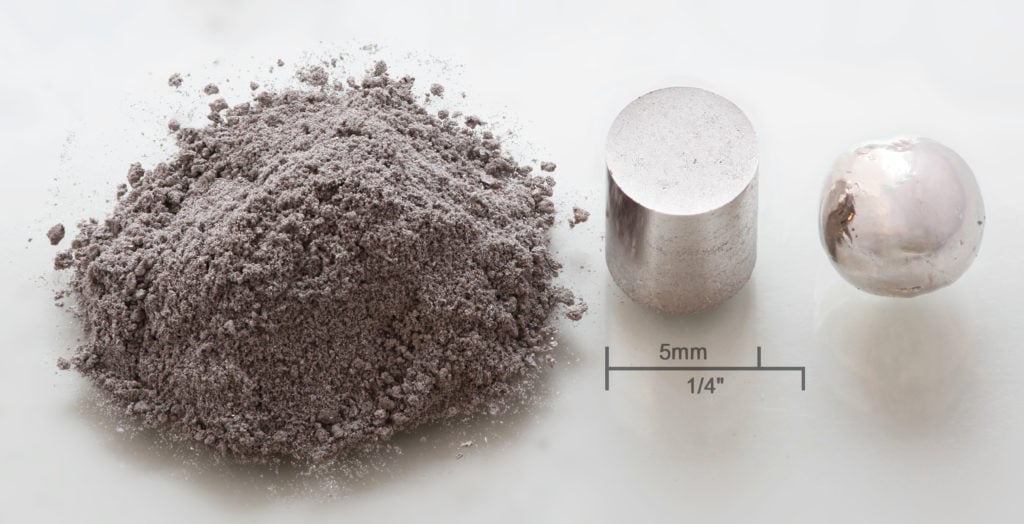
Copper is used predominantly due to its being incredibly malleable and ductile (it easily deforms under both tensile – pulling – and compressive – pushing – stress).
Metals like tin are used as binding agents, creating compressed-copper powder bullets that disintegrate into minuscule fragments when they impact objects harder than themselves.
Because they powder they’re ideal for steel plate shooting but you have to keep in mind they have way more uses than just on steel.
They’re awesome for self-defense and hunting and I’m going to explain why. Frangibles are not only totally capable of stopping a threat and delivering a clean kill on game, but they also disintegrate, drastically reducing over-penetration risks.
Why Frangibles?
Okay, so you’re not sold on why frangibles are awesome. I can understand that — most people need some convincing.
Here are some top reasons why you should consider frangible ammo for training, home defense, and even hunting.
Steel Plate Shooting
When you’re slinging FMJs at steel with a rifle the suggested range is 100 yards.
That’s reiterated on Birchwood Casey’s Donkey Gong box and yes, it is smart to adhere to such rules. Distance isn’t exactly a guarantee, though. Frangibles allow for close-range shooting even with rifles. Don’t believe me? Check this out.
Inceptor is the ammo manufacturer responsible for feeding the Alexander Arms’ .50 Beowulf rifle. The .50 Beowulf is an AR-15 platform rifle designed by Bill Alexander to use a .500-inch projectile.
It rocks.
Felt recoil is manageable but stout.
I’ve run my .50 Beowulf on the Birchwood Casey Donkey Gong – an AR500 steel plate – from under ten yards.
There was definitely an audible thump as the ARX bullets made contact but the only blemish on the steel was the slow disappearance of the neon orange Target Spot sticker.
As for me, I was unscathed and grinning.
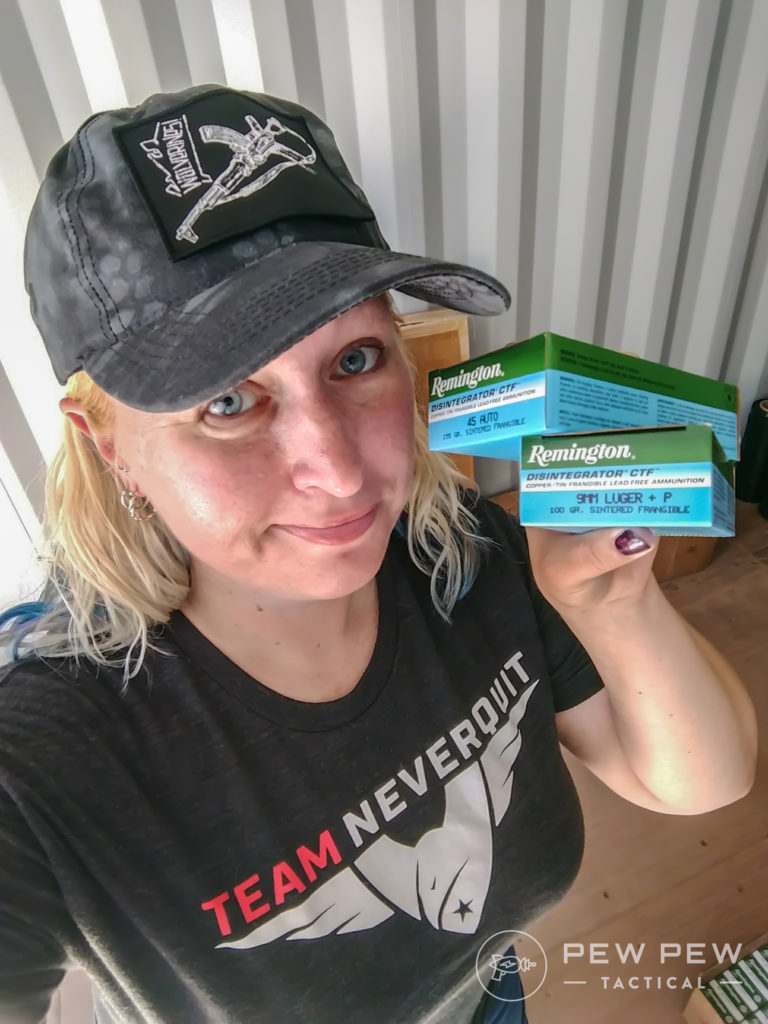
Running pistols up close and personal is even better, not only for training at realistic CCW distances but also because it’s just cool.
I’ve run everything from .380 ACP to .45 ACP to 10mm on steel from mere feet from my target.
Applications for this aren’t limited to plinking at close range, CCW training and especially CQB training and shoot houses are going to bring you in tight to your targets and using frangibles reduces risk of ricochet and backsplash like crazy.
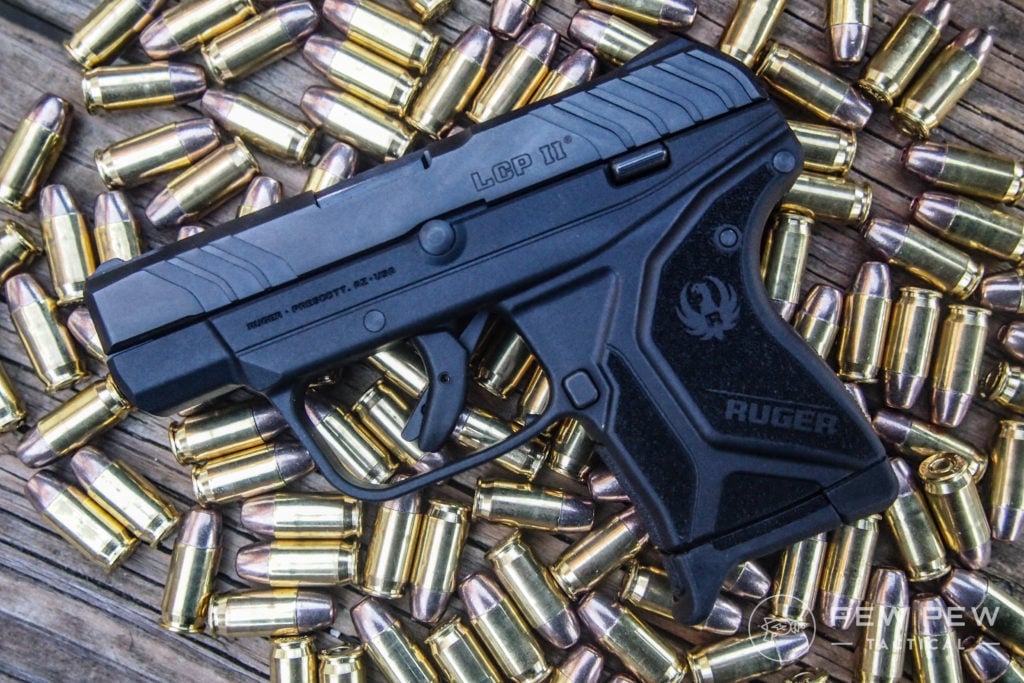
Just last summer a friend of mine was running FMJs on steel plates in an outdoor shoot house scenario – it was the ammo supplied by the manufacturer – and took a ricochet directly to his Adam’s Apple.
Frangibles will powder when they strike any object harder than themselves which reduces risks on paper, too (it isn’t as though those paper targets are floating in mid-air with nothing around them).
Accuracy Is King
Something I hear a lot in gun groups is the belief lightweight projectiles aren’t accurate. While it is true that lightweight bullets are more affected by wind and the air in general, this does not make them inherently inaccurate.
Frangibles can be ridiculously accurate. Just like any brand of ammo, it depends on the gun – some guns are finicky – but I’ve been getting consistently beautiful, tight groups with frangibles for years.
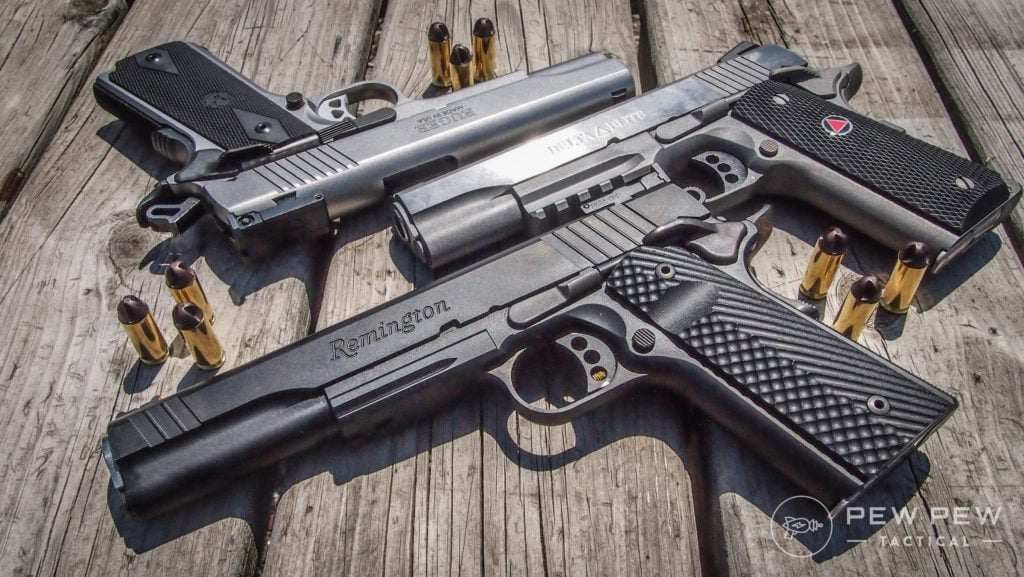
On more than one occasion I’ve been reviewing a gun and discovered my best groups are with frangibles. Also, remember there is a difference between accuracy and precision.
Accuracy means you hit what you were aiming at; precision is a tight group precisely where you want it. Frangibles are precise.
Taking my time to slow-fire I’ve been able to nail some seriously awesome five-shot groups with frangibles.
My smallest group using Inceptor .380 ACP 56-grain ARX from a distance of ten yards was 0.67-inches and with Inceptor 9mm +P 80-grain ARX my tiniest five-shot group at ten yards was 0.63-inches.
And for a new-gun mention, there’s the Mossberg MC1SC, a pistol that absolutely loves Inceptor. I’ve put 2,000 rounds of Inceptor 9mm through the MC1SC so far as part of a torture test and the one-hole, five-shot groups it produces are nothing short of perfection.
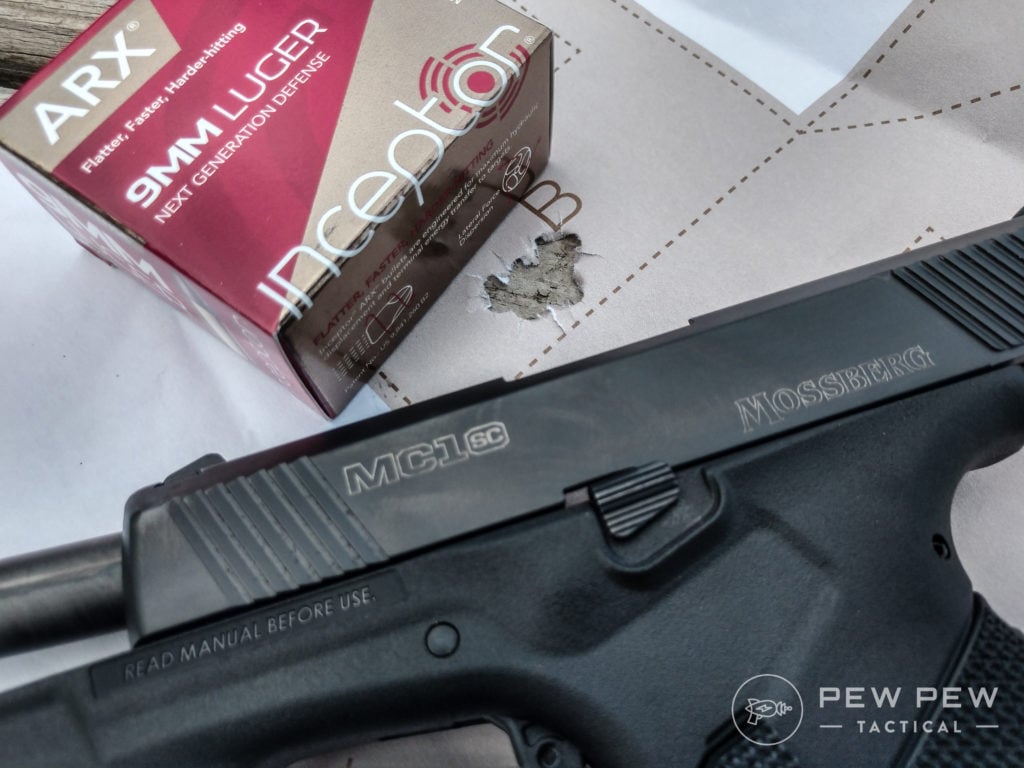
Hunting
Let’s talk hunting before we get into self-defense, mostly because I tend to use hunting as a barometer for my self-defense ammo and guns. Disclaimer: animal anatomy is not a direct clone of human anatomy, obviously, but it still gives you a decent baseline for performance.
This one is easy to sum up. I’ve used several brands of frangible ammunition on everything from badgers to coyotes to feral hogs to deer – and more – and have never been disappointed.
A single shot of Inceptor .40 S&W 107-grain ARX has dropped more than one feral hog, some of which have weighed in over 250 pounds. This includes both head and heart shots.

9mm is not a round I favor for handgun hunting but I have used it on small animals like coyotes. Sinterfire frangibles have also delivered single-shot kills on Blackbuck, Whitetail deer, and feral hogs (among other things).
One of the nice things about frangibles is, the overwhelming majority of the time there’s been no exit wound.
The entrance wounds are often significantly larger than what you’d get from hunting with hollow points and hearts are frequently completely shredded (so if you do eat hearts you’re not going to get that with a vital zone frangible shot).
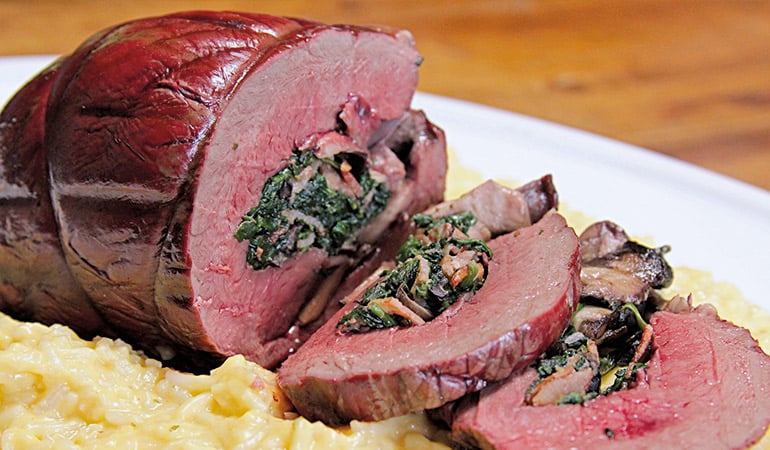
No exit wound applies to distances ranging from five yards to fifty yards and rifle shots fired up to 200 yards away. Although there are no guarantees I will say your risk of over-penetration is enormously reduced when hunting with frangibles.
Self-Defense
Frangible ammo isn’t for every self-defense scenario, but they should at least be considered. Keep in mind that you’re responsible for every single bullet that leaves your gun, so something like over-penetration is important to think about.
Since frangible bullets powder on impact with any object harder than themselves, that means studs and other materials in the walls of your house will cause them to return to the substance from whence they came.

Out in the world, there are practically endless objects that will get it done. Of course, you need to be working seriously at not missing, but my point is frangibles will powder where other bullets will ricochet or simply keep on going.
All the usual rules apply to using frangibles in your EDC. Caliber matters, shot placement is king, and you need to remember some guns are ammo-finicky.
That and you still need to practice. There is no substitute for practice.
The bottom line is easy. Yes, frangibles can be used for self-defense. While they aren’t perfect, they are capable of delivering the desired results and they do it with added safety measures for innocent bystanders, too.
They’re less likely to over-penetrate, reduce risk of ricochet to almost nothing, and due to the lighter-grain bullets they deliver higher velocity, less felt recoil, and grant you a lighter-weight carry gun overall.
Best Frangible Ammo
Now that you’re convinced you need some frangible rounds, lets look at the best ones!
To keep it short, I’ll stick to talking about two brands of frangibles: Sinterfire and Inceptor.
While both companies produce some of their own full cartridges, the majority of their production is bullets for other brands to use. Brands like Federal, Winchester, Fiocchi, Sellier & Bellot, Black Hills, Remington, and more.
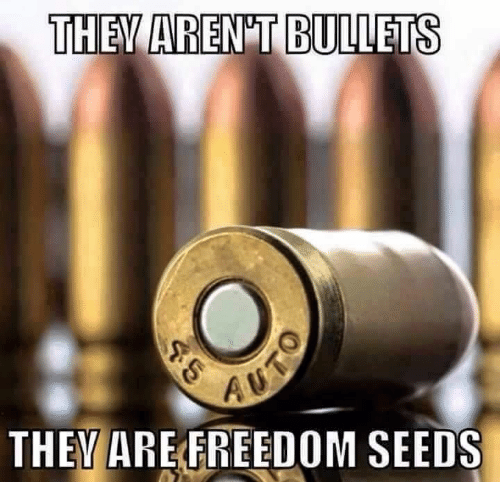
If you have a trusted brand you like, take a look to see if they also have a frangible option using Sinterfire or Inceptor bullets.
Sinterfire is the manufacturer responsible for the lion’s share of frangibles in the gun industry; if you’re using a frangible from a company like Remington, the bullets were made by Sinterfire.
Inceptor is best known for its ARX bullet and has the distinction of using polymer as their binding agent instead of tin.
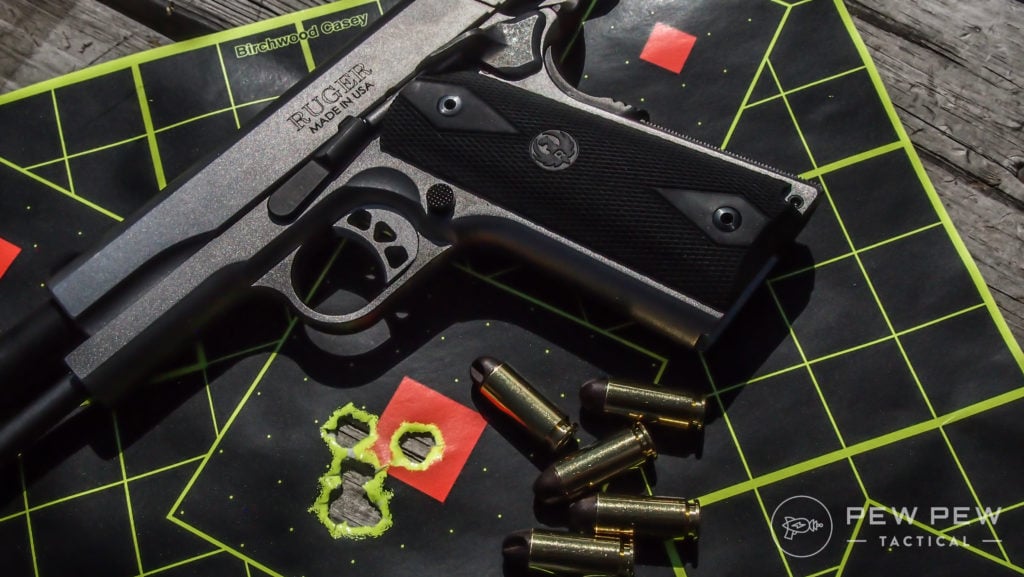
Sinterfire’s bullets are shiny, copper hollow points and training rounds; Inceptor’s bullets are dark brown and fluted (they also make round nose training rounds). Both manufacturers produce good ammo.
1. Inceptor .380 ACP
A petite cartridge perfect for small CCWs and pocket carrying, .380 ACP needs as much help from advanced bullets as it can get to remain effective on target.
Inceptor delivers that ability in spades. And it doesn’t hurt that it is also some of the most accurate .380 ACP ammo I’ve ever tested!
Reliable, accurate, no over-penetration, and can still stop a threat. A solid choice for any EDC CCW.
Prices accurate at time of writing
Prices accurate at time of writing
-
25% off all OAKLEY products - OAKLEY25
Copied! Visit Merchant
2. Speer Lawman 9mm
Speer is a legendary brand and these frangibles are no different. Made mostly for LE training in shoot houses, they still offer a lot of advantages over standard rounds.
Be it training at close range or needing to stop a threat without over-penetration, these are a trusted choice by departments across the nation.
Prices accurate at time of writing
Prices accurate at time of writing
-
25% off all OAKLEY products - OAKLEY25
Copied! Visit Merchant
3. Fiocchi .40 Smith & Wesson
.40 S&W has lost a lot of favor in recent years, but it is still a cartridge that works when you need it to.
I’ve used it on hogs before and gotten one-shot kills, that is a huge testament to .40 S&W effectiveness!
If you don’t have a .40 S&W gun yet, you can find some awesome deals on LEO trade-in these days — go get it!
Prices accurate at time of writing
Prices accurate at time of writing
-
25% off all OAKLEY products - OAKLEY25
Copied! Visit Merchant
4. Federal .45 ACP
Most of the Pew Pew staff has a soft spot for .45 ACP, it’s an American classic that works for self-defense, hunting, and plinking. Federal frangibles work for all three!
For CQB training, frangibles are a must. For hunting, .45 ACP frangibles will put a lot of meat in your freezer. And for self-defense, it’s hard to argue with .45 cal 155gr projectile for when you need a one-shot stop.
Federal is one of our top picks for ammo because it is reliable, accurate, and sold almost everywhere.
Prices accurate at time of writing
Prices accurate at time of writing
-
25% off all OAKLEY products - OAKLEY25
Copied! Visit Merchant
5. Federal .223 Remington
If you get the chance to train CQB, take it. And you’ll want to take some frangible .223 with you also.
Federal 42-grain frangibles also make for great varminting rounds too. Lightweight, high speed, and almost never an exit wound means that rabbits, prairie dogs, and other small game fear Federal.
Prices accurate at time of writing
Prices accurate at time of writing
-
25% off all OAKLEY products - OAKLEY25
Copied! Visit Merchant
6. Inceptor .50 Beowulf
Can you use .50 Beowulf for home defense? Of course, you can. But really we recommend it more for hunting than anything. .50 Beowulf is great for deer, hogs, and the odd t-rex.
It is also amazing for standing super close to steel targets and plinking… Because you can.
Prices accurate at time of writing
Prices accurate at time of writing
-
25% off all OAKLEY products - OAKLEY25
Copied! Visit Merchant
Conclusion
Modern frangibles are not just for steel plates. Yes, their obvious use is for close-quarters training, but they’re also solid choices for hunting and self-defense.
After years spent hunting with them, I’m comfortable stating that penetration depth and permanent wound cavities on a variety of game prove they’re capable of dropping an assailant. Shattered bones and devastating internals on game from both rifles and handguns demonstrate they’ll do it hard and fast.
Consider this: I believe it is our responsibility as hunters to make clean, ethical one-shot kills. If I don’t trust something for hunting I certainly won’t trust my life or my daughter’s life to it on the street. And I trust frangibles.
Also, while close-range shooting is fun—slinging Sinterfire .50 BMG at 70 yards is indescribably awesome! Just remember that it still requires eye and ear protection.
Don’t get overconfident just because your bullets disintegrate on impact. Wear your eye and ear pro!
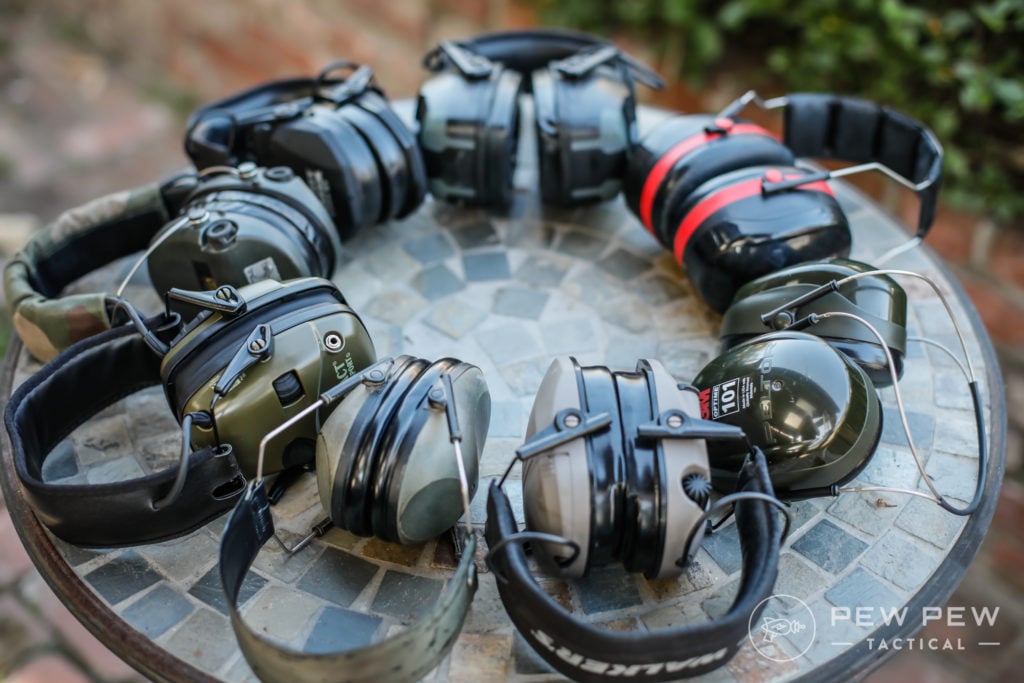
Frangibles have come a long way over the years. Just as JHP ammo has advanced over the years.
What is your take on frangibles? Do you carry them for EDC or home-defense? Let us know in the comments! For all of your ammo needs, take a look at these great articles!

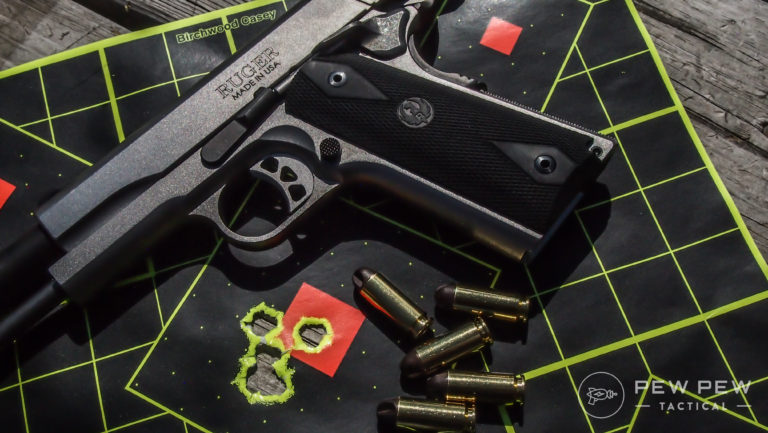
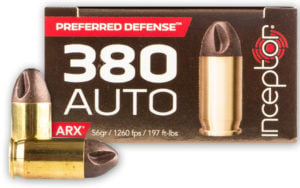
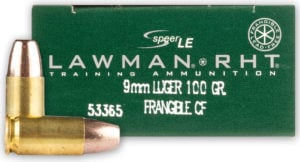
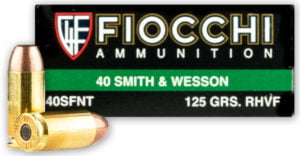
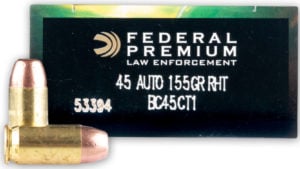
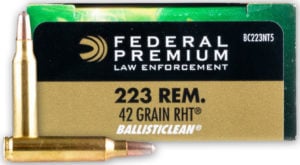
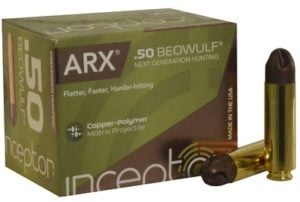



30 Leave a Reply
Quick comment on the statement on accuracy / precision. Many people confuse,or worse interchange, them.
From an engineering standpoint, it's kinda-sorta OK. Precision is derived from the component. Accuracy is derived from the system. If something is precise, it can be made accurate. If it is accurate, it cannot be made precise (without changing components).
Looking at it from a target standpoint, since that is what we're talking about, if you have a 1.5" group at
8 o'clock in the 7 ring, you can adjust to get your group in the black. The group is precise.
If your group is spread equally around the 10 ring in a 4" group, at 12 o'clock, 3, 6, 9 and 4 o'clock it is accurate but not precise. It won't be precise unless you change a component.
Great article, one thing though. The clip you are looping showing a CQB entry is not USMC. The second and third guys to enter the room are carrying L85A3's and wearing M.T.P camo so they'll be British forces. First Guy could be US, perhaps joint training with the USMC.
Does anyone make a frangible 22LR round? Looking for a lead-free alternative so my free-range poultry doesn’t get a heavy metal poisoning problem.
Guy, check out the Norma Eco Speed and Eco Power lineup. Both of those are lead-free and geared toward use on small game.
Looking for a lead-free frangible with lead/heavy metal free primers and powders ...only finding "training/target". Do you all know of any that would be my unicorn ammo for self-defense? I'm fairly new to all things guns, so the Grams etc are over my head right now.
Sarah, the only ammo I can think of with frangible projectiles, lead-free primers, and was marketed for self-defense was the Hevi-Shot frangible ammo. Unfortunately, that line has been discontinued. Frangible ammo is sometimes flexed into a short-range self-defense role even though it isn't expressly intended for it, so I wouldn't get too hung up on frangible ammo being marketed as training ammo. If you are willing to use regular primers though, the Inceptor ARX and Sinterfire Special Duty line would be the top two.
What to use as 9mm frangible for defense in an Extar EP9? Your thoughts please.
Please address 9mm frangible rounds in short barreled handguns vs the 16" barrels common in PCC firearms.
For hollowpoint 9mm rounds: it has been demonstrated that 9mm hollowpoint rounds really aren't made to perform out of 16" barrels and so while they have higher velocity than if shot from pistol, they deform differently (source: Luckygunner) which makes one suspicious of the overall ballistics performance of hollowpoint 9mm rounds fired from a 16" barrel.
But nowhere does anyone make comparisons for 9mm frangibles -- pistol vs PCC. A guess is nice (but I can do that); an educated guess based on extensive experience is better. Some testing would be the best.
Thank you.
My wife's EDC load in her Kahr P380 is the Inceptor ARX. My EDC load in my various 9mms is the Heavy Shot 100gr TCFP at approximately 1400fps from my Kid over ProCarry. It's also a tack driver.
I discovered frangibles by accident. I carry a Glock 17 gen 5. My local shop had 2 boxes of ICC 100gr HPs so I decided to try them. The guy that sold them to me said they were only for steel targets. How wrong was he! I had a paper target tacked against a small tree being about 12 inches around. Within the 8th or 9th shot from the 1st mag, the tree was cut into completely. Looked like I cut it down with an axe. I then shot an old brick that was laying around & the bullet just evaporated. What more could you want for EDC? Very impressive ammo. I’m currently looking into more high endish frangibles like you mentioned.
I appreciate this post. Does anyone have any insights on Winchester Red9s for personal defense? If I were to use them in carry/HD mags, how many should I load and which rounds (ie 1-4th rounds?)
My EDC gun is a stainless Kimber Pro Carry 9mm. It is loaded with 11 rds of Hevy Shot 100gr frangibles. They are very accurate, reliable, HOT, and are inexpensive, at $18/bx for 50rds. What's not to love?
Ordered 2 boxes of Sinterfire for my .380 bodyguard and 2 boxes for my glock19.
Out of 20 rounds in my bodyguard 14 misfires. I've used all kinds of ammo in it and this was the first time anything like this has happened maybe the batch had bad primers. I'll stick with hornandy it it.
As for the 9mm my Glock had no issues at all. Will run another 20 soon to see if I trust them enough to carry with confidence
I discovered Inceptor bullets 2 years ago and began using them in competition. They shoot flat (9mm 1650 fps!) and have 20% less recoil. They are very accurate in both my pistol and my PCC. I have over 40 years of shooting in both the Military (including combat time) and law enforcement and I now use the ARX bullets in both my .45 and 9mm for self defense. I have seen video of these fluted bullets striking not only gel blocks but clay blocks of the same size. These bullets use cavitation and are devastating on soft tissue. I understand the arguments of "but gel blocks are not the same as real people", but gel blocks give us a baseline for testing the effects of different bullets.
Frangible ammunition is not acceptable for hunting or self defense use, and I find it irresponsible for PewPew to publish an article implying that it is. Encouraging gun owners to use products for self defense (like the Speer and Federal products listed) when that ammunition is clearly marked by the manufacturer as for "training only" is highly negligent.
There is a reason that no law enforcement or federal agency uses frangible ammo as a duty load, and it is the same reason it has been since the days of the Glaser Safety slug; frangible ammo either breaks up without causing much damage, or does not break up and acts like FMJ.
In these times when we have so many thoroughly tested and excellently performing JHP defensive loads, seeing this sort of bad information is very disappointing
Thank you for the feedback! LE has the critical need for some penetration, car doors, glass, etc. while also stopping in soft tissue - for the duel goal, modern HP ammo is amazing and is not something that can be had with frangible ammo. However, for purely soft tissue, frangible ammo can work - as evidenced by Kat's numerous game harvests with it.
"Frangible ammo can work" indeed; if it fails as frangible ammo. In which case it acts like very light for caliber FMJ. I do not doubt Kat has used it and had success; just as I do not doubt someone somewhere has killed a bear with a 22. That does not make it ethical; it is irresponsible to recommend frangible (especially frangible training ammo!) for hunting or self-defense, and I definitely question whether hunting with it is humane; there is a reason FMJ is not allowed in many locales for hunting.
FMJ bullets aren't 'the same' as frangible bullets. To claim that they are 'the same' is like saying a Geo Metro is 'the same' as a Corvette. The 'For Training Purposes Only' is mostly a marketing ploy, intended to sell more expesive. 'duty ammo', aka JHPs.
I guess Massad Ayoob has been wrong all these years....
Fiocchi/Sinterfire will disagree with you and are marketing them as such...check them out on 2020 shot show.
Duty ammo for LE agencies is most often 'chosen' by 'bean counters' based on PRICE. RARELY is LE duty ammo chosen because of 'performance'. BTDT
Jason, Your points are valid. I have some information that may rectify what you perceived as bad information.
I read an article that Kat wrote in the July 2019 USCCA magazine that is similar to the above post. In that article, Kat goes on to write, "One of the less harmful false notions floating around the internet is that no law enforcement agencies use frangible ammunition. This is false. The Federal Law Enforcement Training Center, United States Coast Guard and FBI, among others, use Sinterfire. There have also been discussions between Texas and Sinterfire regarding the use of the company's disintegrating bullets for the state's School Marshall Program. Frangibles are ideal for self-defense in close quarters, such as in school, hospitals and, yes, your home."
This article is over a year old, so I am unsure of any subsequent changes. I am also relying on Kat's presentation. I kindly submit for your review.
CAN WE GET THEM FOR RELOADING HAVE NOT SEEN ANYTHING ON THIS YET SUTCH AS LOADING INFO?
Yes, midway sells tangible bullets in many cal
Question about the .223 frangible; If it's 40 grain, then that limits your rifle use to one with a 1:9 twist, if I'm correct? I would need a minimum of 62 grain for my 1:8 rifle and 1:7 AR pistol, according to data I've read.
I can't speak directly to 40 grain frangibles but I run 55 grain XM193 through my 1/7 guns all the time, works fine and shoots accurately.
This has less to do with the weight of the bullet than the shape. In common calibers, long skinny bullets need a faster twist than a round patched ball to be properly stabilized. I've not studied one of these .223 frangibles, but I shoot them in .380 and 9mm, and I can say that the bullet material appears to be approximately 2/3 the density of lead. A 60 grain .380 frangible round nose is roughly the same length as a 95 grain .380 lead FMJ round nose. Meaning, a 42 grain .223 frangible might roughly compare in length to jacked lead .223 bullets weighing 62-70 grains. Just considering this, I would say they should stabilize well with the faster twist rates you noted.
40gr rounds will get a lot of benefit from using a 1/9 twist, but even with a 1/8 it will still be fine. 1/7 and you're likely to have precision issues.
My EDC firearm is a stainless Kimber ProCarry 9mm loaded with (11) rounds of HeviShot's 100gr. frangibles.
Thinking out loud... have you tried 5.56 frangible with a 7.5 barrel on game? I’m gonna do some trials but curious if you have any results. Great article as usual.